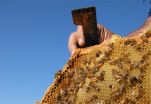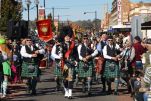Birdwatching in
High Country
Birdwatchers from all over the world flock to Glen Innes Highlands to catch glimpses of close to 200 native and endangered species in our region.
There are a few viewing points that include barbeques and amenities that are perfect for a family picnic. Download our birdwatching brochure for more information.






Beardy Waters, Dam & Woodlands is one of the best birdwatching areas in the district. The site supports a great diversity of wildfowl and there is always a chance of something unusual “stopping over”.
To view the entire dam, two areas must be visited – the Shannonvale Road bridge and Beardy Woodlands Reserve. Platypus have been seen in the waters here.
Birds seen at this location: Little pied, littleblack, pied and great cormorant, little, intermediate and great egret, darter, yellow-billed and royal spoonbill, straw-necked, sacred and glossy ibis, hardhead, shoveler, musk, blue-billed and pink-eared duck, little and wedge-tailed eagle, red-kneed and black-fronted dotterel, sharp-tailed, pectoral and marsh sandpiper, painted and Japanese snipe, black-winged stilt, whiskered tern, restless flycatcher.
Beardy Waters,
Dam & Woodlands
Washpool & Gibraltar
Range National Parks
These World Heritage-listed national parks provide two areas of wilderness where many bird species not normally seen further west can be found. Picnic and camping facilities are available in both parks.
Birds seen at this location: Grey goshawk, brush-turkey, Wompoo fruit-dove, topknot pigeon, brown cuckoo-dove, glossy black and yellow-tailed black cockatoo, king parrot, superb lyrebird, brush cuckoo, noisy pitta, rufous scrub bird, cicadabird, White’s thrush, pale yellow robin, black-faced monarch, rufous fantail, eastern whipbird, southern emu-wren, large-billed, white-browed and yellow-throated scrubwren, brown gerygone, yellow and striated thornbill, little wattlebird, Bell miner, Lewin’s honeyeater, figbird, green catbird, spangled drongo, satin bowerbird.
An under-watched area of eucalypt woodland along with casuarinas and wattles and some heath surrounding pools and falls on Kings Plains Creek. Bush camping is permitted and a fireplace is provided at a scenic picnic area on the banks of the creek.
Birds seen in this location: Little and musk lorikeet, scarlet and eastern yellow robin, rufous and golden whistler, speckled warbler, honeyeater including yellow tufted, spotted pardalote, dusky wood swallow, double-barred, red-browed finch, white-winged triller, chestnut-rumped heathwren.
Kings Plains
National Park
Little Llangothlin Lagoon
Little Llangothlin Nature Reserve's highland wetland attracts a variety of wildfowl and waders. Access: New England Highway, 42km south of Glen Innes Highlands.
Birds seen at this location: Australasian grebe, white-faced and white-necked heron, black swan, black-winged stilt, Japanese snipe, swamp harrier, grey teal, black and musk duck, black-fronted dotterel, varied sitella, grey butcherbird.
A road through farmland and woodland that at times passes next to a shallow creek. The variety of habitats provides homes for many species of birds.
Birds seen in this location: Wedge-tailed eagle, Pacific baza, yellow-tailed black and glossy black cockatoo, rainbow, musk and little lorikeet, king and turquoise parrot, channel-billed cuckoo, rainbow bee-eater, dollarbird, hooded and eastern yellow robin, restless flycatcher, white-throated and brown treecreeper, honeyeater (including scarlet), apostlebird, diamond, plum-headed and redbrowed finch, tawny frogmouth.
Pyes Creek
Road
Mann River
Nature Reserve
A scenic reserve with rugged terrain contrasting with peaceful river flats. Fireplaces and toilets are provided at the reserve, making it ideal for picnics and camping. The waterholes at the camping area are suitable for swimming.
Birds seen at this location: Little pied cormorant, straw-necked ibis, common koel, azure kingfisher, rainbow bee-eater, dollarbird, spotted quailthrush, rose robin, golden and rufous whistlers, red-backed fairy wren, speckled warbler, spotted and striated pardalote, red-browed and white-throated treecreeper, red-browed firetail, yellow-faced honeyeater, eastern spinebill, Torresian crow.
-
Partner with us
- Add your business
- Use of GIH logo
-
Related Sites
- Glen Innes Severn Council
- Glen Innes Highlands Hub
Acknowledgement of Country
Glen Innes Highlands acknowledges and pays respect to the Ngarabul people as the traditional custodians of this land, their elders past, present and emerging, and to Torres Strait Islander people and all First Nations people.
Terms & Conditions | Privacy | Disclaimer
2025 © All Rights Reserved. Website designed by gocrossmedia and built by Cloud Concepts









